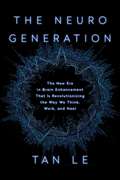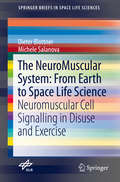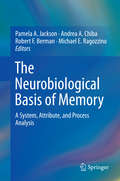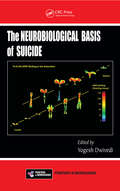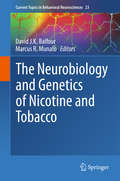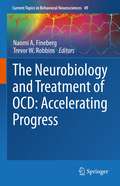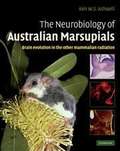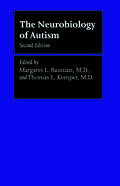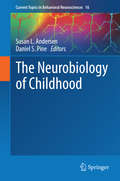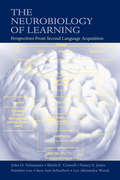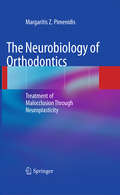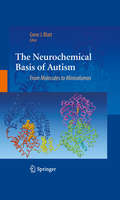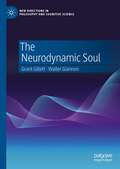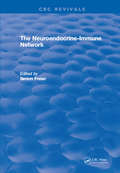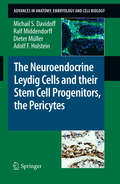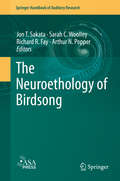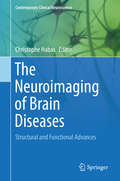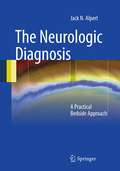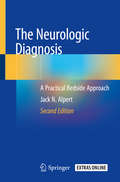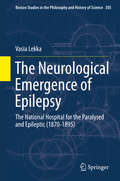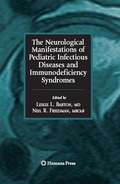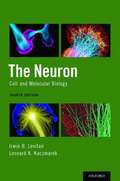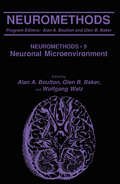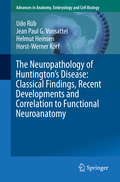- Table View
- List View
The NeuroGeneration: The New Era in Brain Enhancement That Is Revolutionizing the Way We Think, Work, and Heal
by Tan LeBrain science is at the dawn of a new era—and the technologies emerging as a result could forever alter what it means to be human. Welcome to what tech pioneer and inventor Tan Le calls "the NeuroGeneration." It will blow your mind. The human brain is perhaps the most powerful and mysterious arrangement of matter in the known universe. New discoveries that unravel this mystery and let us tap into this power offer almost limitless potential—the ability to reshape ourselves and our thought processes, to improve our health and extend our lives, and to enhance and augment the ways we interact with the world around us. It may sound like the stuff of science fiction, but it is quickly becoming reality. In The NeuroGeneration, award-winning inventor Tan Le explores exciting advancements in brain science and neurotechnology that are revolutionizing the way we think, work, and heal. Join Le as she criss-crosses the globe, introducing the brilliant neurotech innovators and neuroscientists at the frontiers of brain enhancement. Along the way, she shares incredible stories from individuals whose lives are already being transformed by their inventions—an endurance racer paralyzed in a fall, who now walks thanks to neural stimulation and an exoskeleton; a man who drives a race car with his mind; even a color-blind "cyborg" whose brain implant allows him to "hear" colors. The NeuroGeneration reveals the dizzying array of emerging technologies—including cranial stimulation that makes you learn faster, an artificial hippocampus that restores lost memories, and neural implants that aim to help us keep up with or even outpace artificial intelligence—that promise to alter the brain in unprecedented ways, unlocking human potential we never dreamed possible. Le also explores how these futuristic innovations will impact our world, disrupt the way we do business, upend healthcare as we know it, and remake our lives in wondrous and unexpected ways. As fascinating as it is timely, The NeuroGeneration offers a thrilling glimpse of the future of our species, and how changing our brains can change human life as we know it.
The NeuroMuscular System: From Earth to Space Life Science
by Dieter Blottner Michele SalanovaThe book provides fundamental new insights in the structure and function of the healthy NeuroMuscular system. Recent findings suggest that the musculoskeletal system that supports movement control on Earth is controlled by unique principles of structural, biochemical and molecular characteristics. Mechanical loading by working against normal gravity helps to support principal structures in bone, muscle and associated subcellular scaffold components. Disuse or immobilization of the body in bed rest on Earth or in microgravity in Space result in considerable loss of bone, muscle and force with downregulation of neuromuscular activity resulting in impaired performance control. The goal is to develop exercise prescriptions to maintain postural control in normal life, aging and rehabilitation on Earth as well as for an adequate human performance management in Space.
The Neurobiological Basis of Memory
by Pamela A. Jackson Andrea A. Chiba Robert F. Berman Michael E. RagozzinoThis exciting volume offers an up-to-date tour of current trends in the neurobiology of memory while saluting Raymond Kesner's pioneering contributions to the field as a theorist and researcher, teacher and mentor. Starting with his signature chapter introducing the Attribute Model of Memory, the first half of the book focuses on the central role of the hippocampus in processing dimensions of space and time, and branches out to memory system interactions across brain structures. Later chapters apply the attribute model to multiple functions of memory in learning, and to specific neurological contexts, including Huntington's disease, traumatic brain injury, and Fragile X. As a bonus, the book concludes with an essay on Kesner's life and work, and reminiscences by colleagues. Among the topics covered: How the hippocampus supports the spatial and temporal attributes of memory. Self-regulation of memory processing centers of the brain. Multiple memory systems: the role of Kesner's Attribute Model in understanding the neurobiology of memory. Pattern separation: a key processing deficit associated with aging? · Prefrontal cortex and basal ganglia attributes underlying behavioral flexibility. Memory disruption following traumatic brain injury. Cognitive neuroscientists, neuropsychologists, gerontologists, psychiatrists, and neurobiologists will find The Neurobiological Basis of Memory both enlightening and inspiring--much like Kesner himself.
The Neurobiological Basis of Suicide
by Yogesh DwivediWith recent studies using genetic, epigenetic, and other molecular and neurochemical approaches, a new era has begun in understanding pathophysiology of suicide. Emerging evidence suggests that neurobiological factors are not only critical in providing potential risk factors but also provide a promising approach to develop more effective treatment
The Neurobiology and Genetics of Nicotine and Tobacco
by Marcus R. Munafò David J. K. BalfourThe primary purpose of this book and its companion volume The Neuropharmacology of Nicotine Dependence is to explore the ways in which recent studies on nicotine and its role in tobacco addiction have opened our eyes to the psychopharmacological properties of this unique and fascinating drug. While the present volume considers the molecular and genetic factors which influence behavioral responses to nicotine and how these may impact on the role of nicotine in tobacco dependence, the book The Neuropharmacology of Nicotine Dependence focuses on the complex neural and psychological mechanisms that mediate nicotine dependence in experimental animal models and their relationship to tobacco addiction in humans. These volumes will provide readers with a contemporary overview of current research on nicotine psychopharmacology and its role in tobacco dependence from leaders in this field of research and will hopefully prove valuable to those who are developing their own research programmes in this important topic.
The Neurobiology and Treatment of OCD: Accelerating Progress (Current Topics in Behavioral Neurosciences #49)
by Trevor W. Robbins Naomi A. FinebergThe book highlights important new research approaches of clinical relevance, written by prominent researchers in the field of OCD and related disorders. A broad range of topics is covered, beginning with a description of the phenotypic features of the OCD followed by chapters on developmental aspects, animal models, genetic and biological models including neuro-inflammation, functional neuroimaging correlates and information-processing accounts. Finally, existing and novel treatment approaches are covered including clinical and pharmacogenetic treatment models. In this way the volume brings together the key disciplines involved in the neurobiological understanding of OCD to provide an update of the field and outlook to the future. Together, the volume chapters provide focused and critical reviews that span a broad range of topics suitable for both students and established investigators and clinicians interested in the present state of OCD research.
The Neurobiology of Australian Marsupials
by Ken W. S. AshwellAustralian marsupials represent a parallel adaptive radiation to that seen among placental mammals. This great natural experiment has produced a striking array of mammals with structural and behavioural features echoing those seen among primates, rodents, carnivores, edentates and ungulates elsewhere in the world. Many of these adaptations involve profound evolutionary changes in the nervous system, and occurred in isolation from those unfolding among placental mammals. Ashwell provides the first comprehensive review of the scientific literature on the structure and function of the nervous system of Australian marsupials. The book also includes the first comprehensive delineated atlases of brain structure in a representative diprotodont marsupial (the tammar wallaby) and a representative polyprotodont marsupial (the stripe-faced dunnart). For those interested in brain development, the book also provides the first comprehensive delineated atlas of brain development in a diprotodont marsupial (the tammar wallaby) during the critical first 4 weeks of pouch life.
The Neurobiology of Autism (The Johns Hopkins Series in Psychiatry and Neuroscience)
by Margaret L. BaumanIn the decade since the first edition of The Neurobiology of Autism was published, research has revealed valuable new information about the nature and origins of autism, including genetics and abnormalities in such neurotransmitters as acetylcholine and serotonin. For this long-anticipated new edition, neurologists Margaret L. Bauman and Thomas L. Kemper bring together leading researchers and clinicians to present the most current scientific knowledge and theories about autism. The contributors cover genetics, imaging studies, physiology, neuroanatomy and neurochemistry, immunology, brain function, the epidemiology of the disease, and related disorders. Thoroughly updated, The Neurobiology of Autism remains the best single-volume work on the wide array of research being conducted into the causes, characteristics, and treatment of autism.Contributors: George M. Anderson, Yale Child Study Center; Tara L. Arndt, University of Rochester Medical Center (URMC); Trang Au, University of Massachusetts Medical School (UMMC); Jocelyne Bachevalier, University of Texas Health Science Center; Irina N. Bespalova, Seaver Autism Research Center, Mt. Sinai School of Medicine (SARC); Gene J. Blatt, Boston University School of Medicine (BUSM); Susan E. Bryson, IWK Health Centre–Dalhousie University; Timothy M. Buie, Massachusetts General Hospital (MGH); Joseph D. Buxbaum, SARC; Kathryn M. Carbone, The Johns Hopkins University School of Medicine (JHUSM); Diane C. Chugani, Wayne State University; Daniel F. Connor, UMMC; Edwin H. Cook, Jr., University of Chicago; S. Hossein Fatemi, University of Minnesota Medical School; Susan E. Folstein, Tufts University School of Medicine; Eric Fombonne, McGill University; Randi Jenssen Hagerman, UC Davis Medical Center; Elizabeth Petri Henske, Fox Chase Cancer Center, Philadelphia; Jeannette J. A. Holden, Queen's University; Ronald J. Killiany, BUSM; Omanand Koul, UMMC; Mandy Lee, Newcastle General Hospital, U.K.; Xudong Liu, Queen's University; Tara L. Moore, BUSM; Mark B. Moss, BUSM; Karin B. Nelson, National Institute of Neurological Disorders and Stroke; Phillip G. Nelson, National Institute of Child Health and Human Development; Elaine Perry, Newcastle General Hospital; Jonathan Pevsner, JHUSM; Mikhail V. Pletnikov, JHUSM; Stephen W. Porges, University of Illinois at Chicago; Lucio Rehbein, Universidad de la Frontera, Chile; Jennifer Reichert, SARC; Patricia M. Rodier, URMC; Beth Rosen-Sheidley, MGH; Susan L. Smalley, UCLA Neuropsychiatric Research Institute; Ronald J. Steingard, UMMC; Helen Tager-Flusberg, BUSM; Gary L. Wenk, University of Arizona; Andrew W. Zimmerman, JHUSM
The Neurobiology of Childhood
by Susan L. Andersen Daniel S. PineDuring the past years there has been rapid progress in the understanding of how early life stress impacts psychopathology in children. The first two parts of this book present the basic principles of brain development and describe the most important neuronal systems This includes systems involved in emotion processing, cognitive control, and social processes These first two general sections are followed by an overview about recent research on various neuronal and psychiatric disorders, where environmental exposures and altered brain development play an important role: sleep, autism, ADHD and other developmental forms of psychopathology.
The Neurobiology of Childhood (Current Topics in Behavioral Neurosciences #16)
by Susan L. Andersen and Daniel S. PineDuring the past years there has been rapid progress in the understanding of how early life stress impacts psychopathology in children. The first two parts of this book present the basic principles of brain development and describe the most important neuronal systems. This includes systems involved in emotion processing, cognitive control, and social processes. These first two general sections are followed by an overview about recent research on various neuronal and psychiatric disorders, where environmental exposures and altered brain development play an important role: sleep, autism, ADHD and other developmental forms of psychopathology.
The Neurobiology of Learning: Perspectives From Second Language Acquisition (Language Learning Monograph Ser.)
by John H. Schumann Sheila E. Crowell Nancy E. Jones Namhee Lee Sara Ann SchuchertThis book constitutes a timely contribution to the existing literature by presenting a relatively comprehensive, neurobiological account of certain aspects of second language acquisition. It represents the collaborative efforts of members of the Neurobiology of Language Research Group in the Applied Linguistics and TESL Department at UCLA. Members of the group are trained in neurobiology and then use this knowledge to develop biological accounts of various aspects of applied linguistics.The volume avoids the corticocentric bias that characterizes many brain-language publications--both cortical and subcortical structures receive their appropriate attention. In addition, it demonstrates that enough is presently known about the brain to inform our conceptualizations of how humans acquire second languages, thus, it provides a refreshingly novel, highly integrative contribution to the (second) language acquisition literature.The goal of the research program was based on the need to draw more links between the neurobiological mechanisms and second language acquisition. As such, the book promotes a neurobiology of language that starts with the brain and moves to behavior. The fundamental insights presented should guide second language acquisition researchers for years to come.
The Neurobiology of Orthodontics
by Margaritis Z. PimenidisThis book presents the neurobiology of orthodontics according to the most recently acquired knowledge on the interaction of the brain activity with the senses. In particular, it highlights the ability of orofacial sensory input to modulate and change the brain activity underlying functions of the stomatognathic system, such as chewing, biting, speech, and occlusal feedback. The approach adopted thereby represents a significant departure from traditional orthodontics, in which malocclusions of the teeth have been interpreted as deriving from DNA coding errors. The described new conceptualization of the etiology and diagnosis of malocclusions has profound implications for orthodontic therapy, as is clearly explained. Orthodontic therapy in turn has significant effects on the brain, which are documented in a chapter devoted to neuroimaging methods. By opening up new and creative pathways in the world of orthodontics, this book will hopefully both educate and excite the practitioner. It is recommended reading for all orthodontists.
The Neurochemical Basis of Autism
by Gene J. BlattThe Neurochemical Basis of Autism: From Molecules to Minicolumns is a uniquely interdisciplinary text that presents the latest findings regarding the physiological, neuropathological, neurochemical and clinical elements of autism. This book contains an array of unique perspectives on autism from top researchers, beginning with a clinical perspective that discusses etiologies, early identification, advancements in care and associated disorders. It then covers topics such as neuropathological changes in autism to the pre- and post-natal development timing of the disorder, changes in the cerebellum in autism, the role of oxytocin in autism, the relationship of oxidative stress and autism, and a comprehensive review of pharmacotherapies, as well as the hypotheses being used to explore its causes and cures. Lay abstracts make this book as accessible to the parents and caretakers of autistic children as it is indispensable to the scientists, researchers and clinicians on the front line of this affliction.
The Neurodynamic Soul (New Directions in Philosophy and Cognitive Science)
by Walter Glannon Grant GillettThis book is an analysis and discussion of the soul as a psychophysical process and its role in mental representation, meaning, understanding and agency. Grant Gillett and Walter Glannon combine contemporary neuroscience and philosophy to address fundamental issues about human existence and living and acting in the world. Based in part on Aristotle's hylomorphism and model of the psyche, their approach is informed by a neuroscientific model of the brain as a dynamic organ in which patterns of neural oscillation and synchronization are shaped by biological, social and cultural factors inside and outside of it. The authors provide a richer and more robust account of the soul, or mind, than other accounts by framing it in neuroscientific and philosophical terms that do not explain it away but explain it as something that is shaped by how it responds to the natural and social environment in enabling flexible and adaptive behavior.
The Neuroendocrine Immune Network
by S. FreierThis informative publication updates the study of interaction of the nervous and endocrine systems with the immune system in the body. It describes the anatomical basis of these interactions, reviewing the innervation of lymphoid tissue and mast cells. The book discusses the effect of the endocrine system on immune function, including the relation of sex to the immune response. Emphasis is given to opioids, substance P, neurotensin, vasoactive intestinal peptide, somatostatin and cholecystokinin. Also addressed is the immunoregulatory effect of leukotrienes and platelet-activating factors. Scrutinized within are stress as an aspect of neuro-immune interactions, and the central role of the hypothalamus in this context. The book reviews the eye and the gastrointestinal tract with respect to the coordination of the nervous, endocrine, and immune systems in serving these organs. This work is of particular value to those in immunology, endocrinology, gastroenterology, and developmental biology.
The Neuroendocrine Leydig Cells and their Stem Cell Progenitors, the Pericytes
by Adolf F. Holstein Ralf Middendorff Michail S. Davidoff D. MüllerThe discovery of the neuroendocrine features of Leydig cells gave rise to the hypothesis of a potential neuroectodermal and/or neural crest origin of testicular Leydig cells. In an experimental animal model the authors revealed that adult Leydig cells originate by transdifferentiation from stem/progenitor cells (pericytes and smooth muscle cells), underlying the close relationship of Leydig cells with testis microvasculature. This and the supporting data from the literature provided the basis for revealing the pericytes as a common adult stem cell type of mammalian species. Distributed by the microvasculature through the entire body, the pericyte, acting as a resting early pluripotent adult stem cell, provides an ingenious system to assure the maintenance, physiological repair and regeneration of organs, each under the influence of specific local environmental factors.
The Neuroethology of Birdsong (Springer Handbook of Auditory Research #71)
by Arthur N. Popper Richard R. Fay Jon T. Sakata Sarah C. WoolleyVocal signals are central for social communication across a wide range of vertebrate species; consequently, it is critical to understand the mechanisms underlying the learning, control, and evolution of vocal communication. Songbirds are at the forefront of research into such neural mechanisms. Indeed, songbirds provide a particularly important model system for this endeavor because of the many parallels between birdsong and human speech. Specifically, (1) songbirds are one of the few vertebrate species that, like humans, learn their vocal signals during development, (2) the processes of song learning and control in songbirds shares many parallels with the process of speech acquisition in humans, and (3) there exist deep homologies between the circuits for the learning, control, and processing of vocal signals across songbirds and humans. In addition, because of the diversity of songbirds and song learning strategies, songbirds offer a powerful model system to use the comparative method to reveal mechanisms underlying the evolution of song learning and production. Taken together, research on songbirds can not only reveal general principles underlying vertebrate vocal communication but can also provide insight into potential mechanisms underlying the learning, control, and processing of speech. This volume will cover a range of topics in birdsong spanning multiple level of analysis. Chapters will be authored by the world’s leading experts on birdsong and will provide comprehensive reviews of the processes underlying song learning, of the neural circuits for song learning and control as well as for the extraction and processing of song information, of the selection pressures underlying song evolution, and of genetic and molecular mechanisms underlying the learning and evolution of song. The primary goals of this volume are to provide comprehensive, integrative, and comparative perspectives on birdsong and to underscore the importance of birdsong to biomedical research, evolutionary biology, and behavioral, systems, and computational neuroscience.The target audience of this volume will be graduate students, postdoctoral fellows, and established academics and neuroscientists who are interested in mechanisms of communication from an integrative and comparative perspective. The volume is intended to function as a high-profile and contemporary reference on current work related to the learning, control, processing, and evolution of birdsong. This volume will have broad appeal to comparative and sensory biologists, neurophysiologists, and behavioral, systems, and cognitive neuroscientists who attend meetings such as the Society for Neuroscience, the International Society for Neuroethology, and the Society for Integrative and Comparative Biology. Because of the relevance of birdsong research to understanding human speech, it is likely that the volume will also be of interest to speech researchers and clinicians researching communication, motor, and sensory processing disorders.
The Neuroimaging of Brain Diseases: Structural and Functional Advances (Contemporary Clinical Neuroscience)
by Christophe HabasNotable experts in the field of neuroimaging provide comprehensive overviews of advances in functional and structural aspects of both common and uncommon brain disorders. Functional imaging is evolving quickly but researchers and clinicians do not always have a strong understanding of the fundamental basis of the imaging techniques that they use. By focusing on both structure and function this book will provide a strong foundation for emerging developments in the field.
The Neurologic Diagnosis
by Jack N. AlpertThe Neurologic Diagnosis: A Practical Bedside Approach is an introductory text that simplifies the often unwieldy method of making a neurologic diagnosis. Medical students are often intimidated by a deluge of data, extensive differential diagnoses, and have no organizational structure to follow. Diagnostic techniques of general medicine are not applicable. Neurology is a unique specialty since it requires the intermediary step of an anatomic diagnosis prior to proffering a differential diagnosis. Yet the required knowledge of neuroanatomy need not be profound for the student who will specialize in any field other than neurology and neurosurgery. This text is directed to medical students and residents who will all be regularly faced with numerous patients who have neurologic symptomatology. Typical one-month neurology rotations out of four years of medical school is clearly inadequate training to make a cogent neurologic diagnosis, especially since subsequent instruction is commonly provided by upper level residents who have the same background and numerous misconceptions. This is not a comprehensive text. The emphasis in this concise and practical title is on establishing a neuroanatomic diagnosis before formulating a differential diagnosis. In addition, treatment is seldom discussed since it is likely to change radically over time. Focused and succinct, The Neurologic Diagnosis: A Practical Bedside Approach is an invaluable resource for medical students and residents interested in the practice of neurological diagnosis.
The Neurologic Diagnosis: A Practical Bedside Approach
by Jack N. AlpertAn introductory text that transitions into a moderately advanced, case-based analysis of neurologic disorders and diseases, this book emphasizes how to simplify the process of making a neurologic diagnosis. Medical students and residents are often intimidated by a deluge of data, perception of anatomic complexity, extensive differential diagnoses, and often have no organized structure to follow. Diagnostic methods of general medicine are not applicable. Indeed, neurology is a unique specialty since it requires the intermediary step of an anatomic diagnosis prior to proffering a differential diagnosis. Yet the required knowledge of neuroanatomy need not be profound for the student or resident who will not specialize in neurology or neurosurgery. The Neurologic Diagnosis: A Practical Bedside Approach, 2nd Edition is primarily directed to neurology and neurosurgery residents but it will be useful for medical and family practice residents who will discover that a great percentage of their patients have neurologic symptoms. A one-month neurology rotation out of four years of medical school is not sufficient to make a cogent neurologic diagnosis. The aim of this concise, practical book -- which includes an in-depth video of how to perform a neurologic examination -- is to facilitate the process of establishing a neuroanatomic diagnosis followed by a rigorous analysis of symptoms and signs to reach a well-thought out differential diagnosis. Focused and succinct, this book is an invaluable resource for making a lucid neurologic diagnosis.
The Neurological Emergence of Epilepsy
by Vasia LekkaThis book explores the emergence of epilepsy as a purely neurological disorder, in the second half of the nineteenth century. It focuses on the world's first neurological hospital, the National Hospital for the Paralysed and Epileptic in London, and on its leading figure, John Hughlings Jackson (1835-1911). Through an analysis of the National Hospital's medical records and a historical account of the course of epilepsy until our time, this book presents the nineteenth-century turn towards the scientific study of the human brain and the various political, social, ideological and epistemological implications of this major change. In spite of the recent trend of describing the history of mental illness, mental patients and psychiatric institutions, so far, neurology, epilepsy and epileptic patients have largely remained outside the scope of social historians, historians of medicine and social scientists. This book has the ambition to fill that gap.
The Neurological Manifestations of Pediatric Infectious Diseases and Immunodeficiency Syndromes
by J. J. Volpe Leslie L. Barton Neil R. FriedmanIn this concise book, an international panel of experts provide a succinct, up-to-date, evidence-based reference to the neurological consequences of infectious diseases and immunodeficiency syndromes in children in one readily accessible volume. Within each of its conveniently structured chapters, readers will find a general description of the disease or disorder. Finally a volume for pediatricians, neurologists, infectious disease specialists and all who care for children.
The Neuron: Cell And Molecular Biology
by Leonard K. Kaczmarek Irwin B. LevitanThe Fourth Edition of The Neuron provides a comprehensive first course in the cell and molecular biology of nerve cells. <p><p>The book begins with properties of the many newly discovered ion channels that have emerged through mapping of the genome. These channels shape the way a single neuron generates varied patterns of electrical activity. Covered next are the molecular mechanisms that convert electrical activity into the secretion of neurotransmitter hormones at synaptic junctions between neurons. The following section examines the biochemical pathways that are linked to the action of neurotransmitters and that can alter the cellular properties of neurons or sensory cells that transduce information from the outside world into the electrical code used by neurons. The final section reviews our rapidly expanding knowledge of the molecular factors that induce an undifferentiated cell to become a neuron, and then guide it to form appropriate synaptic connections with its partners. This section also focuses on the role of ongoing experience and activity in shaping these connections, and finishes with an account of mechanisms thought to underlie the phenomena of learning and memory. <p><p>The book contains scores of color figures and fully updated chapters; online content packaged exclusively with the Fourth Edition includes detailed animations of neural processes, in-depth supplemental reading, and additional full-color figures and tables.
The Neuronal Microenvironment
by Alan A. Boulton Wolfgang Walz Glen B. BakerThe Neuronal Microenvironment
The Neuropathology of Huntington's Disease: Classical Findings, Recent Developments and Correlation to Functional Neuroanatomy
by Udo Rüb Jean Paul G. Vonsattel Helmut Heinsen Horst-Werner KorfThis monograph describes the progress in neuropathological HD research made during the last century, the neuropathological hallmarks of HD and their pathogenic relevance. Starting with the initial descriptions of the progressive degeneration of the striatum as one of the key events in HD, the worldwide practiced Vonsattel HD grading system of striatal neurodegeneration will be outlined. Correlating neuropathological data with results on the functional neuroanatomy of the human brain, subsequent chapters will highlight recent HD findings: the neuronal loss in the cerebral neo-and allocortex, the neurodegeneration of select thalamic nuclei, the affection of the cerebellar cortex and nuclei, the involvement of select brainstem nuclei, as well as the pathophysiological relevance of these pathologies for the clinical picture of HD. Finally, the potential pathophysiological role of neuronal huntingtin aggregations and the most important and enduring challenges of neuropathological HD research are discussed.
